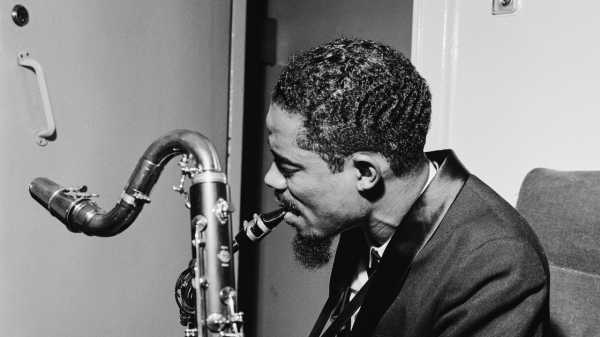
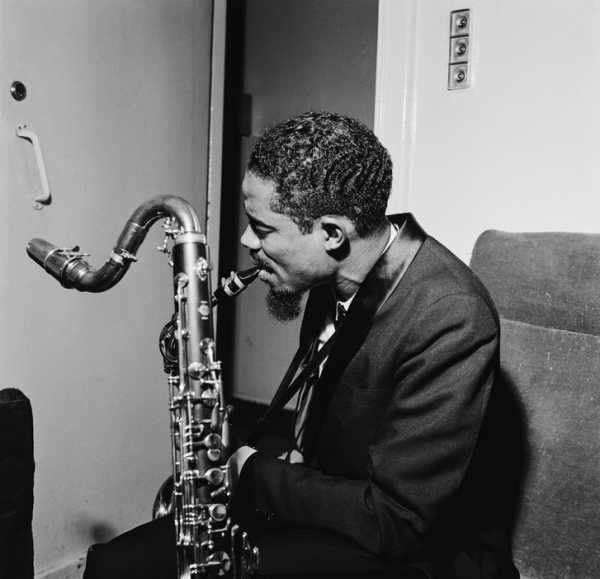
Dolphy’s music emerged from the bebop revolution of Charlie Parker, Dizzy Gillespie, and Bud Powell and opened it into a new dimension.
Photograph by Bill Wagg / Redferns / Getty
I got into jazz because of Dave Brubeck, but jazz got into me because of Eric Dolphy. I had just turned fifteen when a random encounter with Brubeck’s music made me start listening curiously to New York’s jazz station at the time, WRVR; a few weeks later, when I heard the title tune of Dolphy’s 1960 album “Out There” on that station, it was a conversion experience. It instantly made jazz my prime artistic obsession and Dolphy my foremost musical hero. I had no idea that he was considered “out there” as an avant-gardist, revered by some and reviled by others for his musical audacity and originality—but I soon found myself delving deeply into Dolphy’s discography and then to records of other musicians directly or indirectly connected to him, such as John Coltrane, Ornette Coleman, Cecil Taylor, Charles Mingus, and Albert Ayler.
Dolphy’s life was shockingly brief, his recorded legacy both delayed and truncated: he led only a handful of studio sessions and officially recorded concerts, starting in 1960, and he died in 1964, at the age of thirty-six. (At the time, he was in Europe, where he was planning to stay for an extended time because of critical hostility to his music in the United States and his resultant inability to pursue his career steadily here.) Nonetheless, his discography is copious, because he worked as a sideman in some major groups, including ones led by Mingus and Coltrane, and recorded generously with them—both officially and on bootlegs. There are also fine bootlegs of performances led by Dolphy—most, as a soloist with pickup rhythm sections (often, fine ones) in Europe, and a few, with his own groups, stateside.
The tracks on “Eric Dolphy, Musical Prophet: The Expanded 1963 New York Studio Sessions,” a three-disk set, from Resonance Records, that is out on Friday, were recorded between July 1 and July 3, 1963, in New York. They were produced by Alan Douglas, a devoted and discerning producer who had previously recorded Coltrane, Taylor, Mingus, Jackie McLean, and other jazz luminaries (as well as the epochal album “Money Jungle,” featuring Duke Ellington, Max Roach, and Mingus) and would, later, record Jimi Hendrix. The Dolphy sessions were taped for Douglas’s own, short-lived record label, FM, which issued two LPs of them (“Conversations,” from 1963, and “Iron Man,” from 1968), both of which I owned and listened to excitedly, even as a teen-ager. The Resonance set includes two disks featuring the tracks from those albums, which, until now, have been available on CD only. What’s more, many hours of recordings from the week of sessions remained unissued, and “Musical Prophet” includes an entire disk-plus, eighty-five minutes’ worth, of alternate takes and also compositions that are being issued here for the first time. (It also includes a ninety-six-page booklet that’s teeming with information about and reflections on Dolphy, including interviews with Richard Davis and Sonny Simmons, two of the musicians who perform—brilliantly—on the album, and with other great musicians who knew him, including Sonny Rollins and Joe Chambers.)
Dolphy, born in Los Angeles in 1928, may have seemed like a late starter—his first major public role came in 1958, as part of the Chico Hamilton Quintet—but he was actually a precocious artist who cultivated his art devotedly, privately, and in the company of like-minded musicians who knew of his prodigious talent long before the world at large got to hear it. Dolphy practiced and studied obsessively; his fluency and proficiency rival Coltrane’s; in his years of study, he developed techniques and ideas that, when he did emerge publicly, in Hamilton’s group, were fully formed. His main instrument was alto saxophone, on which he has a full, ringing, siren-like tone that’s instantly recognizable; he also played flute, clarinet, and, especially, an instrument that hardly any other jazz musician used—the bass clarinet. His sound and style on it were so distinctive that, to this day, the instrument is closely identified with him.
Dolphy’s music emerged from the bebop revolution of Charlie Parker, Dizzy Gillespie, and Bud Powell and opened it into a new dimension. His music is tonal, largely related to the harmonic structure of the compositions he played (whether his own, other composers’, or American Songbook standards), but his sense of tonality is intricately chromatic and rendered all the more complex by his frequent, jolting leaps of wide intervals that make even harmonious lines sound disjunctive and bend the family resemblances of his solos toward modern, atonal composed music. That abstract mood is also reflected in the severe yet spontaneous logic of his solos—yet his multidimensional sense of form is as natural and intimate as breathing. Dolphy’s way with blue tones is angular, jauntily inflected, urbane; his music has the tangle and the clamor of city streets, the ferocity of crowds, the romanticism of late-night lights. At the same time, there’s an intensity to his playing that, too, is exemplary of jazz modernism; the emotional and intellectual stakes are enormous, and his sense of solitary dedication and introspective commitment provides a fierce, bright illumination.
MORE FROM
Culture Desk

An Overanalysis of James Harden’s Step-Back
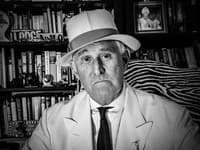
Of Course Roger Stone Thinks That He Lives in “The Godfather”

A Surprise Ending for Westsider Books
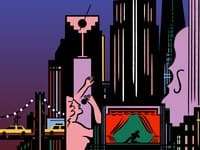
What to Do in N.Y.C. This Weekend: Robert Mapplethorpe, Focaccia, and Native American Dance

The Freewheeling Playwright Jez Butterworth Takes On Ireland’s Troubles
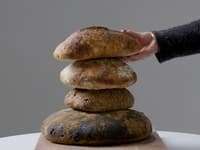
Bread Makes a Comeback
What I thought I was hearing, when I first heard Dolphy, was intellectual realism, philosophical refractions of recognizable, passionate personal experiences; and the performances on “Musical Prophet” extend the range of those experiences beyond that of other releases. In an essay that’s included in the set’s extensive booklet, Douglas’s former associate Michaël Lemesre cites an interview in which Douglas recalled the origins of the session, the first to be made for FM: “We began with Eric Dolphy. I asked him what he wanted to record. He replied, ‘Just to play—nobody lets me make what I want—with musicians who I love.’ ” In “Musical Prophet,” Dolphy assembles an extraordinary and unusual batch of musicians, and he groups them in distinctive, revealing ways.
Dolphy’s studio recordings for other labels featured him in quartets or quintets, and, here, too, there are pieces placing Dolphy in the front line of a quintet alongside the trumpeter Woody Shaw, who was then eighteen years old and had been recruited by Dolphy to make his first recordings. Dolphy also plays several duets with the bassist Richard Davis that recall his duets with Mingus, and he plays a brief, scintillating unaccompanied piece for alto (“Love Me,” which is also heard in two wondrous alternate takes). What makes “Musical Prophet” unusual in the context of Dolphy’s oeuvre is that it includes three pieces for groups ranging from a sextet to the near-big-band assemblage of ten musicians, which also feature several powerful soloists alongside Dolphy—notably, the alto saxophonist Sonny Simmons, the flutist Prince Lasha, the saxophonist Clifford Jordan (best known for tenor, here playing soprano), and the vibraphonist Bobby Hutcherson.
These compositions’ orchestrations reflect an enduring interest of Dolphy’s, one that he hardly fulfilled. For instance, in his association with Coltrane, Dolphy orchestrated the big-band arrangements on Coltrane’s “Africa/Brass” album, from 1961; in 1960, and again in 1962, he performed as a soloist in the rigorous compositional context of works by Gunther Schuller; and, as in these earlier recordings, the ensemble’s interjections in the larger-group pieces in “Musical Prophet” provide the horn soloists with brusque and complex springboards for improvisation—and suggest the broader spectrum of Dolphy’s ambitions. Some of these larger pieces feature playful arrangements (notably, of Fats Waller’s “Jitterbug Waltz” and Simmons and Lasha’s “Music Matador”) with a theatrical flair akin to that of some of Mingus’s works; others have a fierce, eruptive density that reflects his interest in modern composed music.
Yet Dolphy was never able to maintain a steady working group for long, because he could never be sure of working steadily. The prospect of developing compositions for large ensembles was even more elusive, and “Musical Prophet” offers tantalizing hints of the directions that, with a little success and a little recognition, his work might have taken. Dolphy had expressed the desire to work with Taylor, a pianist whose thunderous and crystalline abstractions also expanded to original and large-scale group concepts—albeit ones that also, for financial reasons, were realized all too rarely.
At the same time, “Musical Prophet” catches Dolphy perched on the edge of a precipice of his own seeking. For all the demanding intellectual organization of his performances, his work always stretched tensely between sound and sense. Not only did he have a distinctive tone on all of his instruments, but his search for his own world of sound was as crucial as his search for notes—and his quest for a sound that was more than one note, or wasn’t necessarily a note at all but perhaps even a shout, a growl, a roar, or a cry, wove throughout his work and occasionally blazed forth in extraordinary outbursts. The musician of the times who most ardently pursued that ideal, Albert Ayler, was also in Europe in 1964, and Dolphy, who had just left Mingus’s band, was planning to join Ayler’s group. But, in West Berlin, in June of that year, he collapsed in a diabetic coma and never emerged. It went undiagnosed: local doctors reportedly assumed that Dolphy, as a black jazz musician, had a drug problem, and never checked his blood sugar. (Dolphy didn’t use drugs; for that matter, he didn’t drink or smoke cigarettes.)
Racism is the explicit subject of one of the performances included in “Musical Prophet,” the only one that wasn’t recorded by Douglas. That piece, “A Personal Statement,” a.k.a. “Jim Crow,” is a composition by the pianist Bob James, who is white; he wrote it for a quartet (himself, Dolphy—on alto, flute, and bass clarinet—a bassist, and a drummer), along with lyrics and vocalese performed by the countertenor David Schwartz with a fervent, keening air of lamentation. It’s neither a masterwork of composition nor of poetry, but, along with Dolphy’s superb solos, it further reflects his interest in blending improvisation with composition—and the curiosity, generosity, and sense of principle and purpose that are at the core of his own art.
There are other recordings of Dolphy that I listen to more frequently than those of “Musical Prophet”—especially ones, such as “Out There,” “In Europe, Vol. 3,” and “Last Date,” on which he’s the only wind-instrument soloist and where he solos at greater length, pursuing a rare and exalted sort of introspective intensity. But “Musical Prophet” offers thrills that are unique in Dolphy’s discography. It reaches very far afield, at the vanishing point of Dolphy-ism; it crystallizes ideas latent in Dolphy’s career at that time and points far in the direction of paths that lay open in his imagination. It makes clear that his work as an itinerant soloist and as a sideman wasn’t the result of his failure to develop his own group concept but the result of economics and of politics. “Musical Prophet” also features other wonderful musicians (notably, Simmons, whose solos are among the album’s high points) alongside Dolphy, whose opportunity to play in such varied and happily assembled groups gave rise to some sequences and moments of an astounding power. In college, I blew out a speaker listening to a solo by Dolphy on one of the tracks on this set (the piece titled “Iron Man”); for all its cerebral majesty, Dolphy’s playing was, for me, also noise music, a visceral blast of musical energy that outshocked all the electric guitars in my album collection. Here’s a Spotify playlist of some of my favorites of his recordings.
Sourse: newyorker.com






